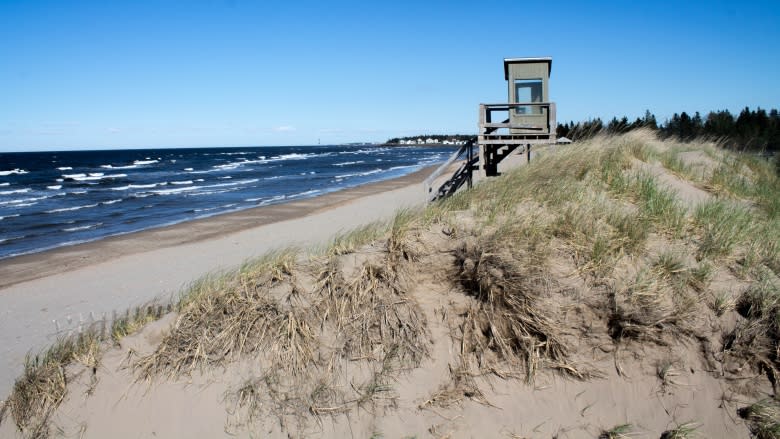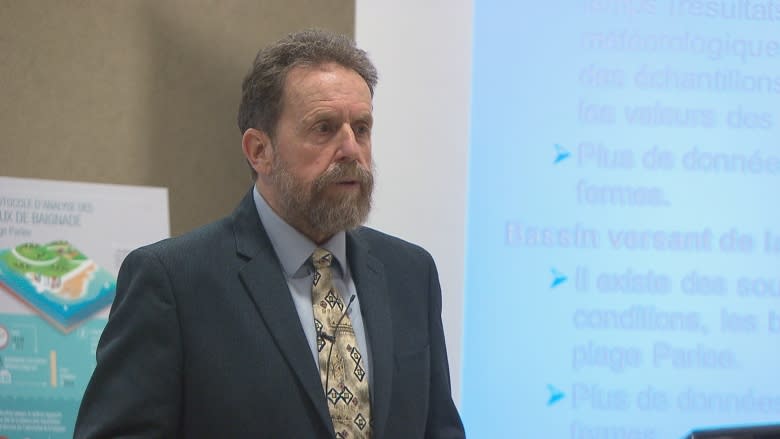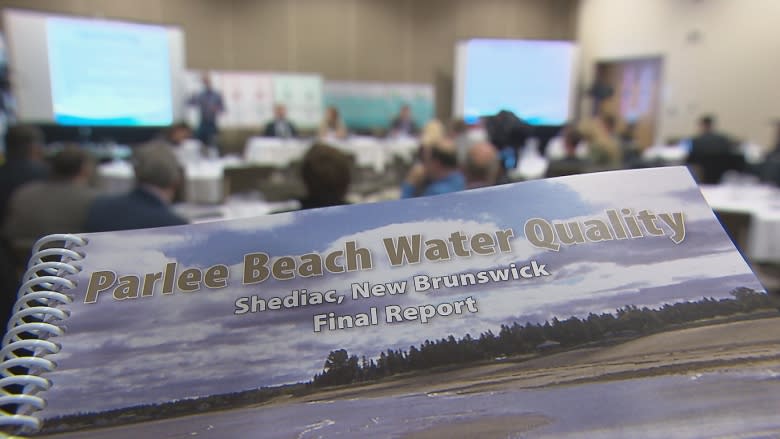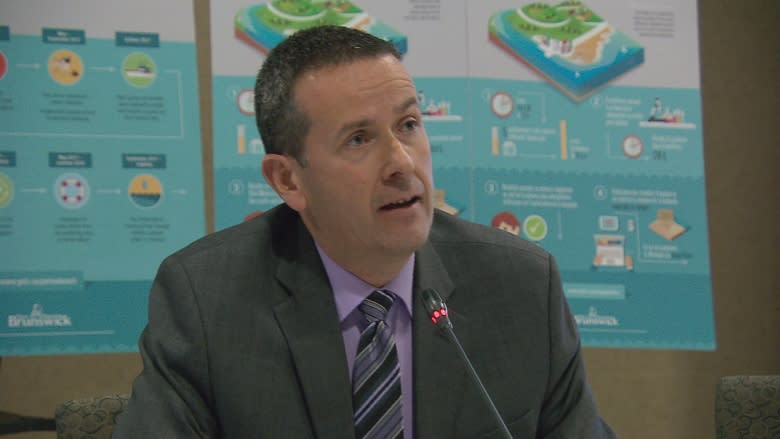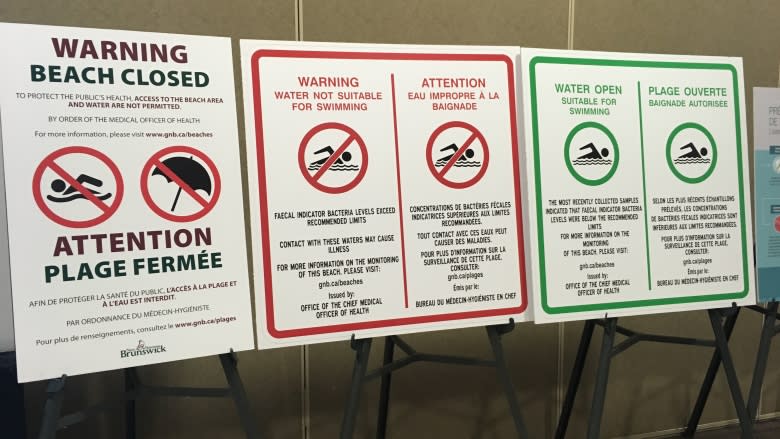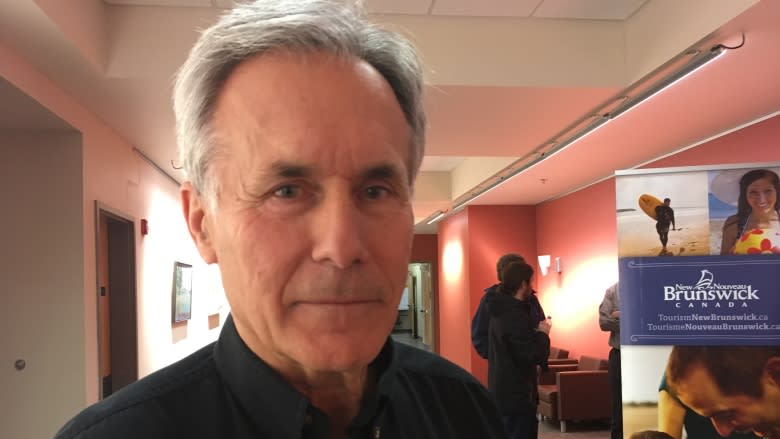Parlee Beach water study can't nail down cause of fecal contamination
The government released its long-awaited final report from a steering committee Friday on water quality at Parlee Beach, and made 14 recommendations that will be implemented at a cost of $760,000.
The report, coming after 18 months of work, found that old septic tanks at cottages and RVs are "strongly suspected" of being the cause of fecal contamination of the water off Pointe-du-Chêne on the Northumberland Strait.
But the committee said it couldn't be sure.
"From the data we have, we can't really say well it's 50 per cent due to agriculture operation and 25 per cent due to dogs — we don't have that kind of information," said Jacques Paynter, an engineer from Amec Foster Wheeler and the project manager.
"Basically what we've determined is there are bacteria sources in the watershed and these must be addressed."
Serge Rousselle, the minister of environment, said the next steps will be even more investigative and should prompt changes.
"During the next two years, as you saw with the 14 recommendations, we're going to continue all this research, and as soon as we got firm data that confirm things, we will take action."
Among the recommendations made by the steering committee is one to conduct a targeted investigation to verify if on-site septic tanks are a potential source of bacteria in high-density areas with substandard building lots. Those areas were identified in a consultant's report.
Another recommendation calls for a boat-free swimming zone to enhance swimmer safety and mitigate the potential effects from the boats near the beach.
The committee also recommends a better monitoring system in the watershed. The report suggests increased sampling at more sites and conducting DNA testing in the watershed and at the beach.
In 2017, a report from the Shediac Bay Watershed Association found fecal matter from humans, dogs and cows.
The steering committee's report also suggests the development of a tool to predict water quality with relevant data that could be used by the province's medical health officer to issue "no swimming" advisories.
The tool would help address the issue of having to wait 48 hours for a water sample to be analyzed before advisories can be issued.
"I believe we are taking an important step towards restoring confidence that Parlee Beach is a safe and clean destination for all to enjoy," Rousselle said.
More questions
The committee found no evidence of a "chronic" problem with the water quality, which it described as "suitable for swimming." Bacteria in surface water is common in North America, it said.
When bacteria guidelines were exceeded at Parlee Beach last summer, the weather, especially the wind, was one of the causes, the report said.
High levels "appear to be caused by an infrequent combination of meterological and oceanographic conditions. Mainly wind direction and high tides (to a lesser extent)."
A news release also noted more data would be collected in 2018 to confirm those initial findings.
Arthur Melanson, a member of Red Dot Association, a local group worried about water contamination, said members will comb through the thick report carefully over the next few days.
He added he is happy the government is committed to continuing testing into next summer, but said the report has left him with more questions than answers.
The steering committee was the government's response to an increasing number of media reports about the poor water quality at New Brunswick's most popular beach.
CBC News found the province had created a more relaxed, made-in-New Brunswick water rating system, instead of adopting the widely used Canadian recreational water quality guidelines. The province also generally tried to minimize the impact of contamination problems at Parlee over several governments, over the past two decades.
The creation of the steering committee was announced soon after a report by the Shediac Bay Watershed Association found high levels of human fecal bacteria in the Bay of Shediac.
Provincial officials from Health, Tourism and Environment, as well stakeholders and scientists, met regularly over the past year and a half to look at causes of contamination and possible solutions.
In 2017, it was announced Parlee Beach would now follow federal guidelines for water quality. Under those, the beach saw no-swimming advisories on nine days last summer.
The highest bacterial counts were seen on Aug. 22 at Parlee, where one sample found fecal bacteria of 1,616 enterococci/100 ml water, almost 25 times above acceptable standards.

